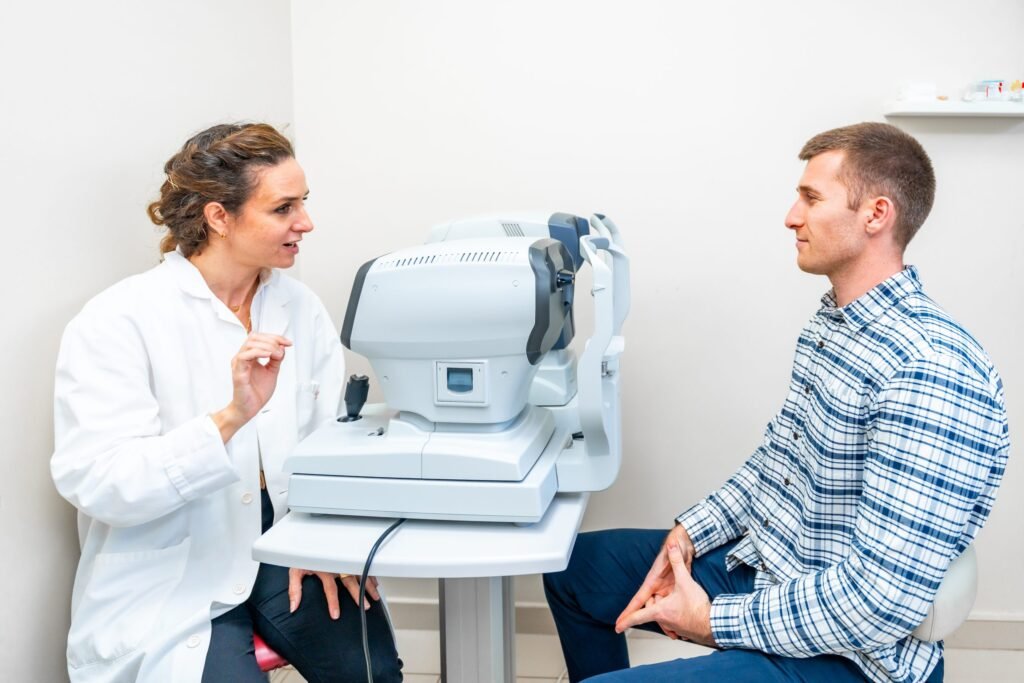Eyelid asymmetry—where one eyelid differs in shape, size, or crease position from the other—is a common concern that affects many people worldwide. While slight asymmetry is natural, noticeable differences can impact both appearance and function. In Korea, renowned for its advanced plastic surgery expertise, eyelid asymmetry correction is increasingly recognized as both a functional necessity and an aesthetic enhancement.
This article explores why eyelid asymmetry correction is more than just a cosmetic procedure in Korea and how Korean surgeons approach these cases with precision and care.
Understanding Eyelid Asymmetry
Eyelid asymmetry can manifest as:
- Uneven eyelid creases (one double, one monolid, or different crease heights)
- Unequal eyelid openings (one eye more open or droopy than the other)
- Differences in eyelid skin folds or puffiness
- Unequal brow position affecting eyelid appearance
While mild asymmetry is common and harmless, more severe cases may cause:
- Visual field obstruction
- Eye strain or fatigue
- Self-consciousness or emotional distress
Why Eyelid Asymmetry Correction Goes Beyond Beauty
1. Functional Improvement
- Droopy eyelids (ptosis) can impair vision and cause headaches or neck strain from compensatory posture.
- Correcting eyelid height and fold symmetry improves visual field and eye function, reducing discomfort.
2. Psychological Impact
- Asymmetry can cause self-esteem issues and social anxiety.
- Many patients seek correction to feel balanced and confident in both personal and professional life.
3. Complex Surgical Planning
- Asymmetry correction is more challenging than standard double eyelid surgery—it requires meticulous assessment and customized surgical techniques.
How Korean Surgeons Approach Eyelid Asymmetry Correction
🧑⚕️ Comprehensive Evaluation
- Detailed preoperative assessment including eyelid measurements, eyelid muscle function (levator strength), and brow position.
- Use of digital imaging and 3D simulation to plan the procedure and predict outcomes.
🔧 Tailored Surgical Techniques
- Uneven crease correction: Adjusting the height and shape of one or both eyelids for symmetry.
- Ptosis repair: Strengthening the levator muscle in the droopy eyelid.
- Fat repositioning or removal: To balance puffiness and contour differences.
- Brow lift: If asymmetrical brow height affects eyelid appearance.
- Often combines incisional double eyelid surgery with functional repairs.
Patient Candidacy and Expectations
Ideal Candidates:
- Individuals with noticeable eyelid crease or opening asymmetry causing functional or aesthetic concerns.
- Patients with mild to moderate ptosis.
- Those who have had prior unsuccessful eyelid surgery and require revision.
Setting Realistic Expectations:
- Perfect symmetry is challenging; the goal is significant improvement and natural balance.
- Healing takes time, and slight asymmetry may persist initially.
- Revision surgery may sometimes be necessary.
Why Choose Korea for Eyelid Asymmetry Correction?
- Expertise: Korean surgeons have extensive experience with complex eyelid anatomy and revision surgeries.
- Advanced Technology: Use of high-precision instruments and digital planning tools.
- Holistic Care: Emphasis on both function and aesthetics, ensuring improved vision and appearance.
- Cultural Sensitivity: Respect for ethnic features, avoiding unnatural “Westernization.”
- Patient-Centered Approach: Thorough consultations, psychological support, and attentive aftercare.
Recovery and Aftercare
- Postoperative swelling and bruising can last 1–2 weeks; Korean clinics provide detailed recovery protocols.
- Regular follow-up visits ensure healing is on track and symmetry is maintained.
- Patients are advised to avoid strenuous activity and protect eyes from sunlight during recovery.
Real Patient Stories
- Many Korean and international patients report significant improvement in both vision and confidence.
- Revision cases, often complex, are handled with exceptional care by specialists in Seoul’s top clinics.
Final Thoughts
Eyelid asymmetry correction in Korea represents a blend of functional surgery and aesthetic artistry. It addresses real medical issues while delivering balanced, natural-looking eyelids. For patients struggling with asymmetry, Korea offers world-class expertise and personalized care—making it a trusted destination for both cosmetic enhancement and functional restoration.




